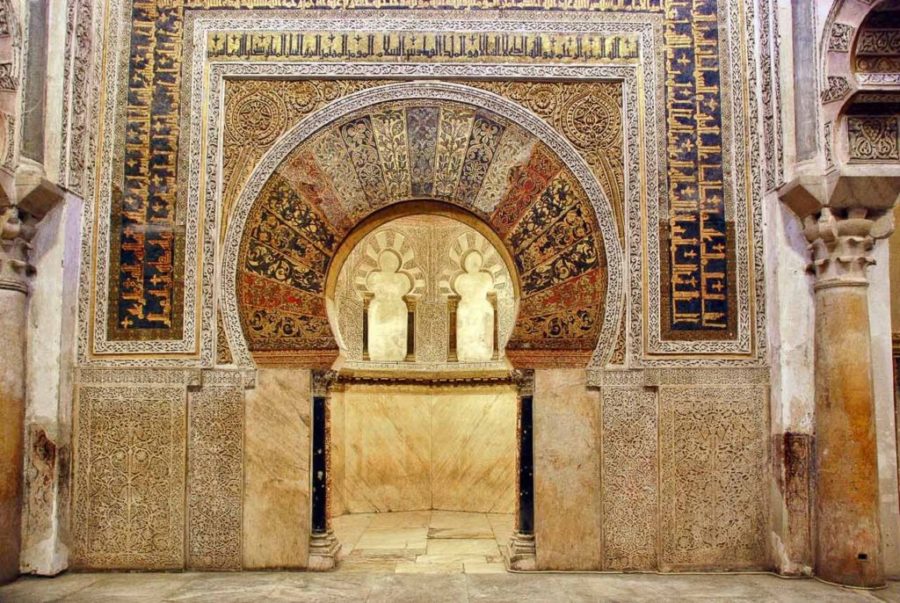
Mihrab is an essential element of Islamic religious architecture
Mihrab as an architectural element has evolved over a long period of time, writes Tugba Erzincan for İslam Ansiklopedisi.
There was no mihrab in the Prophet’s Mosque in Medina, but there was a place where the Messenger of Allah (peace be upon him) stood, conducting namaz. When under Umar ibn Abdul-Aziz in 707-710. The Prophet’s Mosque was rebuilt, then a mihrab in the form of a niche was built in this place, which they began to call the mihrab of the Messenger of Allah. In other mosques, during the early period of Islamic history, the direction of the qibla was indicated by a colored line, stones, or plasterboard. Samples of such plates dating from the 13th century can be seen in Cairo and Mosul. The Egyptian historian al-Maqrizi (1364-1442) reports that the first mihrab was built by Umar ibn Abdul-Aziz. On the other hand, he also writes that the mihrab in the Amr ibn al-Asa mosquein Cairo, at first it did not have the shape of a depression in the wall, and such a shape was given to it by the governor of Egypt, Kurra ibn Sharik in 711-712. The earliest examples of niche semicircular mihrabs, which make it possible to form another row in prayer, appear to be found in these two mentioned mosques, as well as in the Umayyad mosque in Damascus (705-714). None of them have survived to this day. And the earliest surviving one is located in a cave under the Qubbat al-Sahra (Dome of the Rock) mosque in Jerusalem (Al-Quds) and dates back to 691.
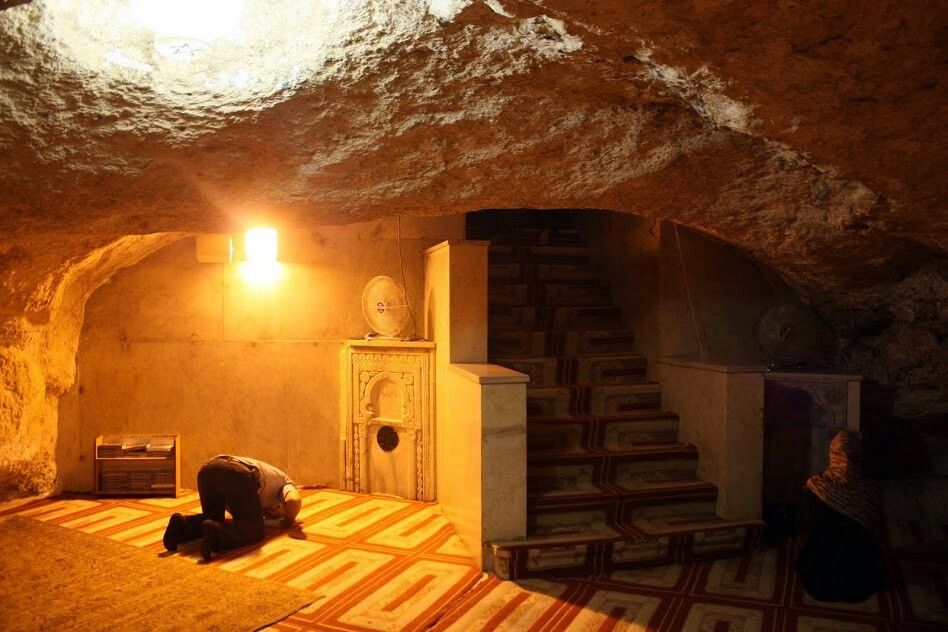
The earliest surviving is located in a cave under the Qubbat al-Sahra mosque in Jerusalem and dates back to 691 / Source: pinterest.com
Since the practice of creating mihrab did not exist during the lifetime of the Messenger of Allah (peace be upon him), some said that it was an innovation and was not permissible. But the majority of religious scholars consider mihrabs to be consistent with Sharia law. At the same time, in works on fiqh, questions are considered about what form a mihrab should have , whether it can be taken as a determination of the direction to the qibla, how long the imam should stand in it.
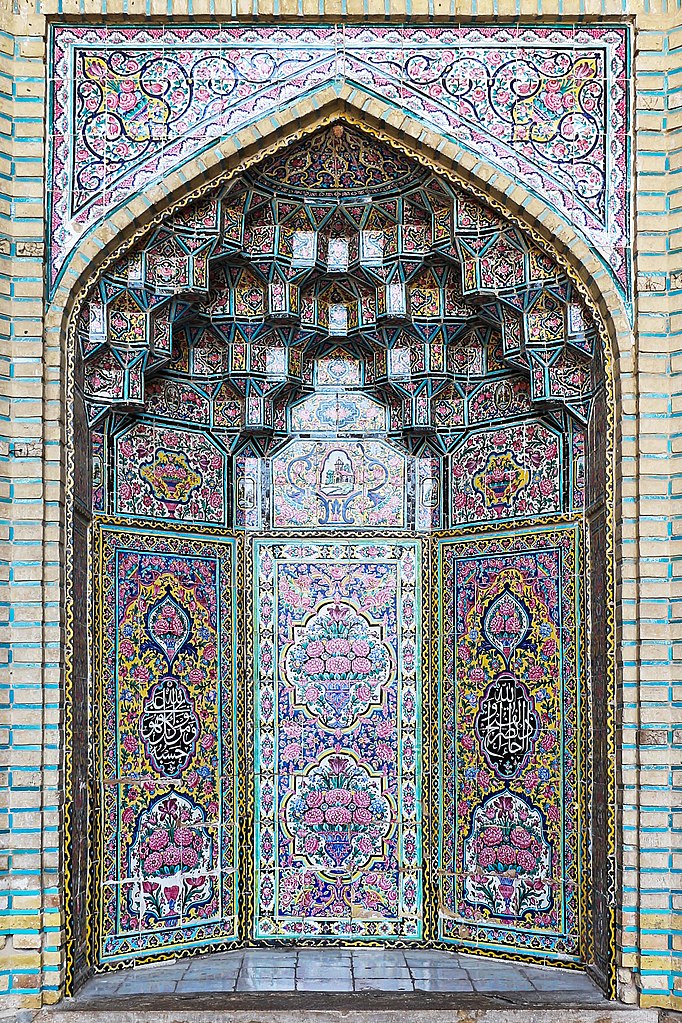
Mihrab of the Nasir al-Molk Mosque in Iran / Source: commons.wikimedia.org
Over time, the mihrab began to have a complex structure, acquired such elements as columns, borders, arches, corners, inscriptions and abundant decorations. The upper part of the mihrab can have the form of a semicircular or pointed arch, be decorated with transverse ribs or muqarnas. The niche can be semicircular, rectangular, polygonal or two-stage. Along with this, there are mihrabs that do not include any of these elements and have a very different layout and shape. In some cases, the mihrab protrudes from the outer walls of the mosque, in others it remains inside them. Sometimes they are built slightly above the floor level in the mosque so that the imam can be seen by all parishioners.
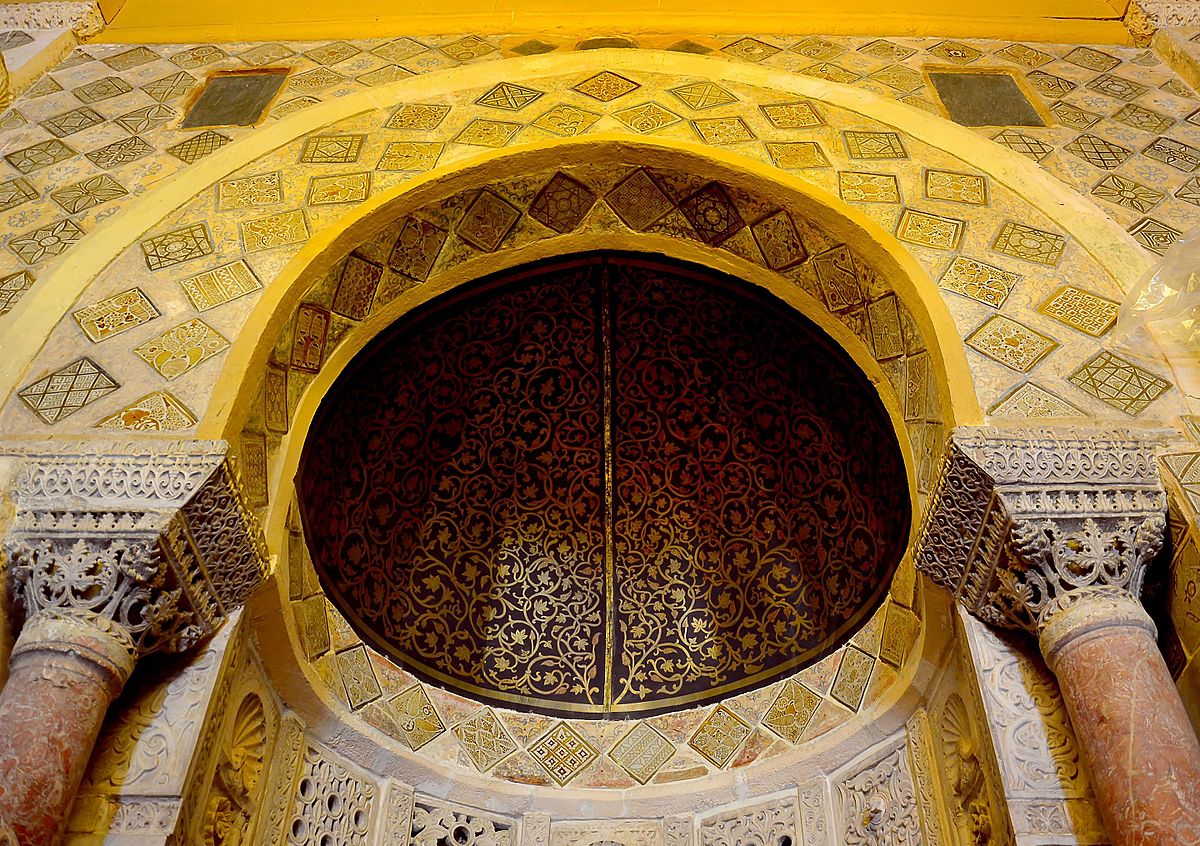
Mihrab of the Great Mosque of Kairouan / Source: en.wikipedia.org
A variety of materials are used for mihrabs – natural stone, plaster, tiles, brick and wood. And their design can be divided into three groups – frames, geometric and floral compositions, inscriptions. The most widespread ayahs with which the mihrabs were decorated are the 144th ayah of Sura al-Bakar and the 37th ayah of Surah Ali Imran. In addition, the “Ayat of the Throne” and “Words of Testimony” are widely used.
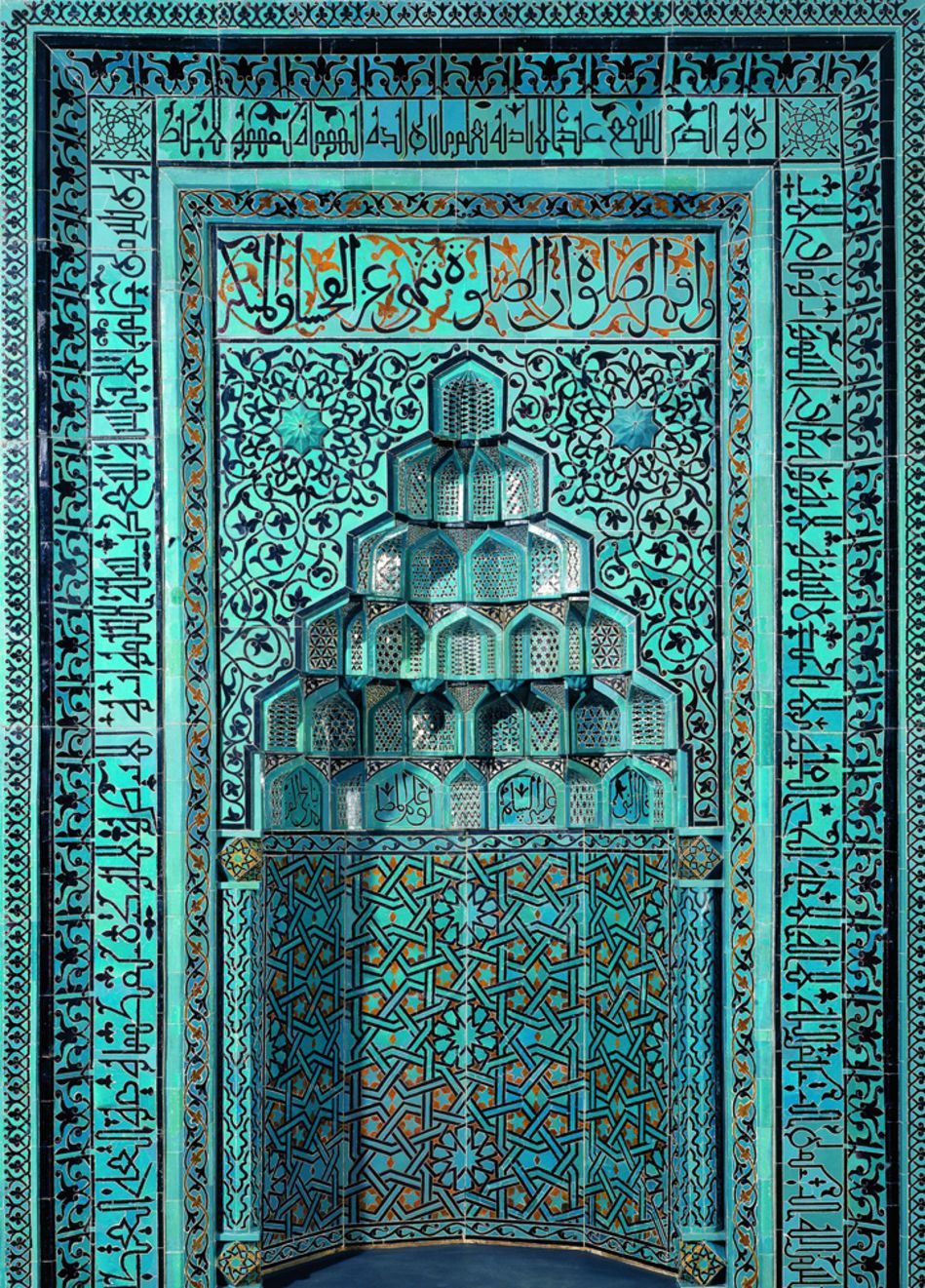
Mihrab of the Beihekim Mosque in Konya / Source: pinterest.com
In mosques, the mihrab is usually located in the middle of the wall facing the qibla. In Musallah and namazgyahah it represents a single niche or stone. In large mosques, there may be several mihrabs – in different parts of the building and in the porticos adjacent to the mosque, where latecomers perform namaz. For example, the Ibn Tulun mosque in Cairo has 6 mihrabs built in different periods.
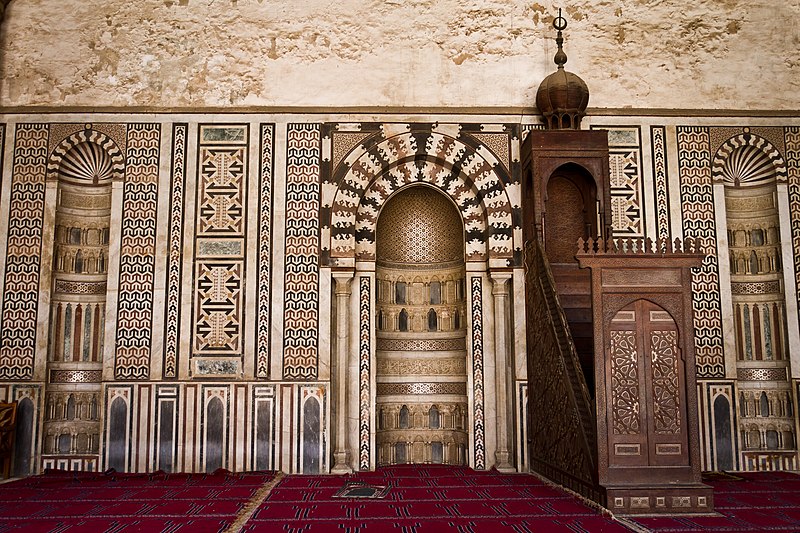
Mihrab of the mosque of al-Nasir Muhammad in Cairo / Source: en.wikipedia.org
Since the educational premises in the madrasah were simultaneously used for performing namaz, and the tombs, like the graves in them, were oriented towards the qibla , mihrabs were also erected there.

Mihrab of the Friday Mosque (Jama Masjid) in Vijayapura (India) / Source: commons.wikimedia.org
Islamosphere

